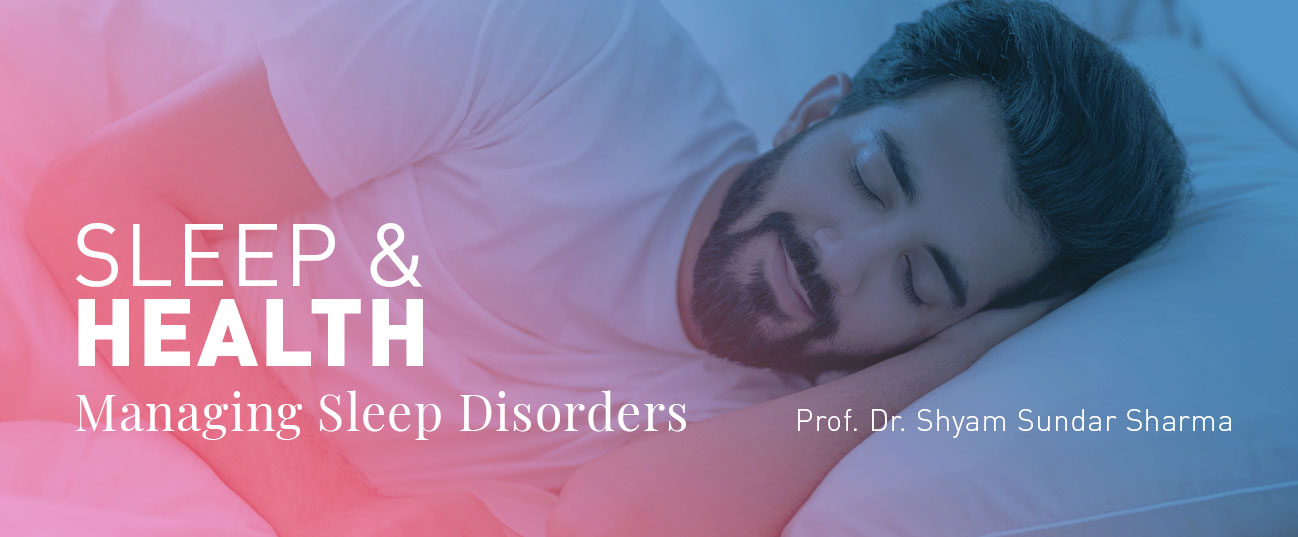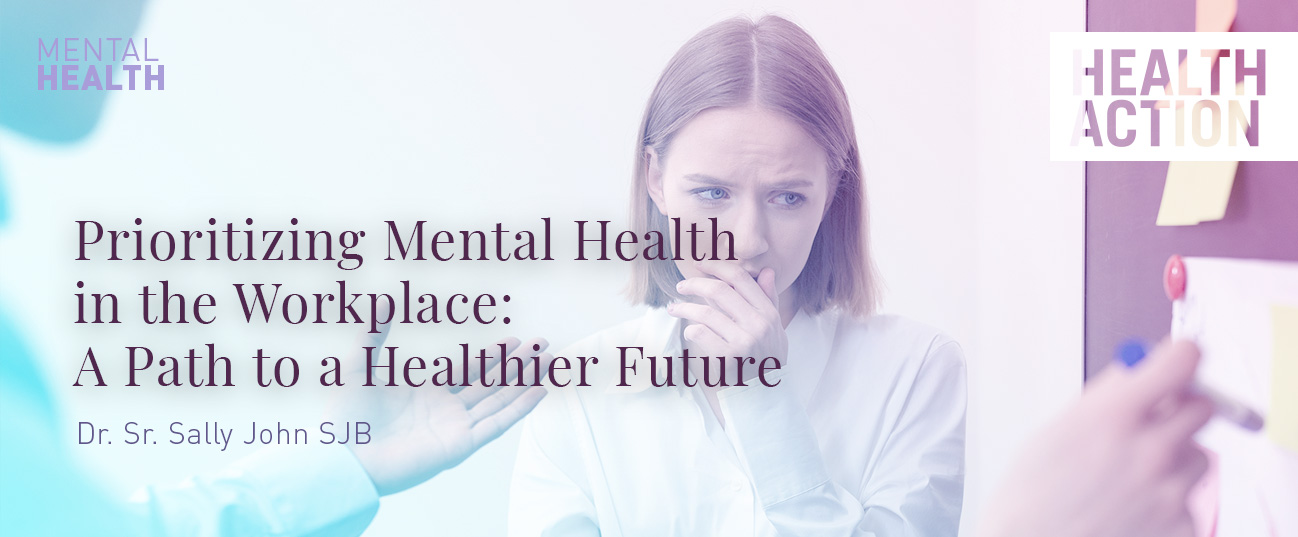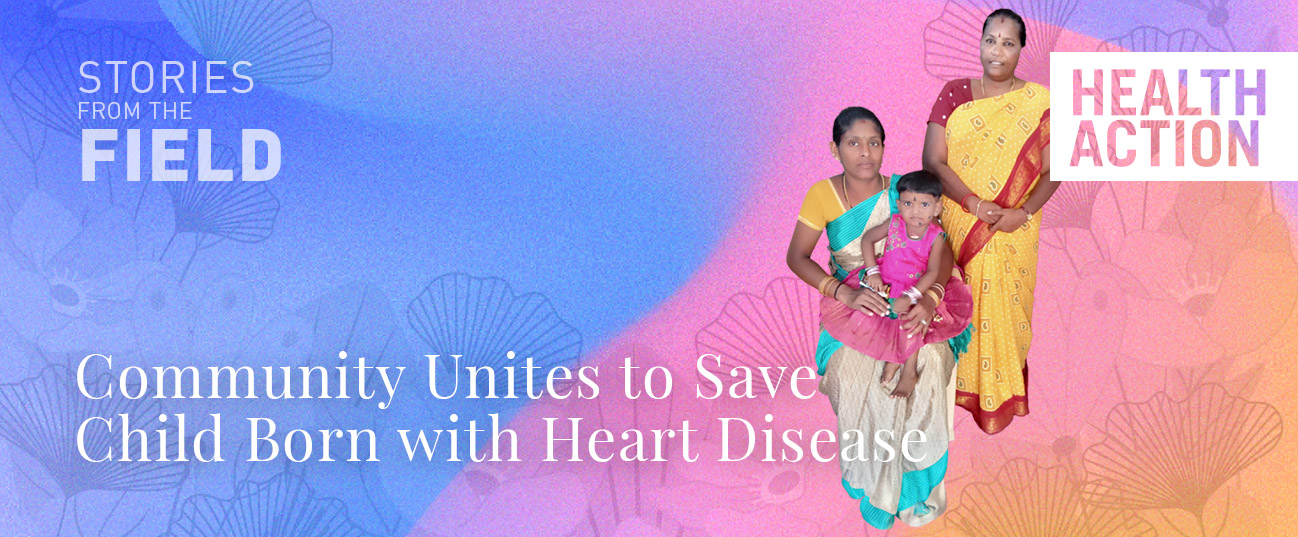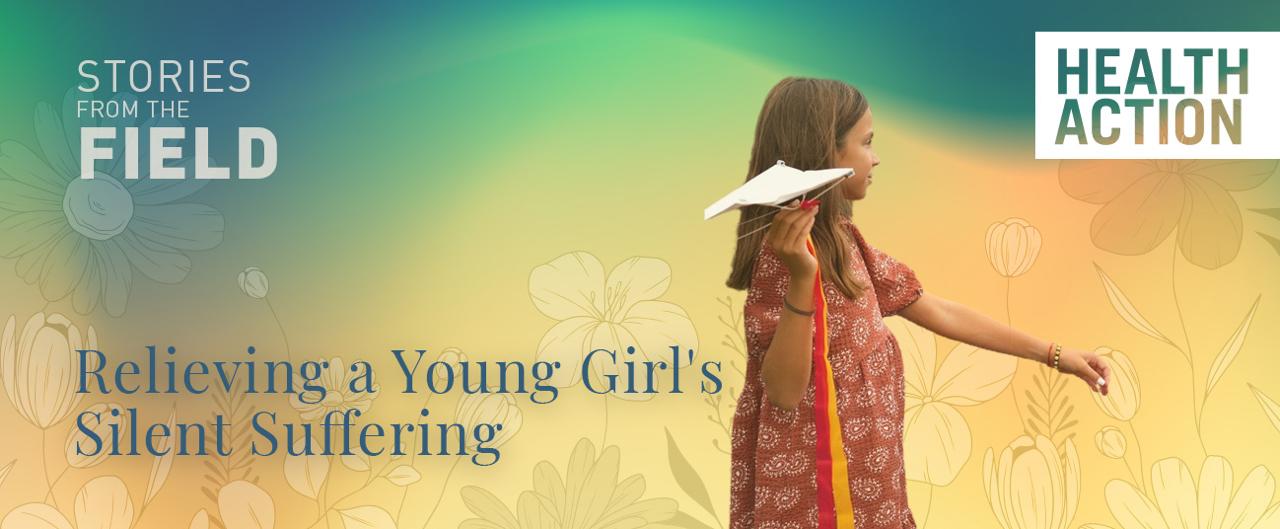
Sleep is a fundamental necessity for all of us. Sleep requirements vary with age and between individuals, but, in general, the average requirement for a healthy adult is between seven to eight hours of sleep a night. Most people think that sleep is a passive, dormant part of our daily lives but it is as essential as food and water. Sleep deprivation has an unpleasant effect on work, social and family life and a negative impact on mood, energy and concentration. Insufficient sleep is always associated with several chronic diseases and conditions such as diabetes, cardiovascular disease, obesity and depression. Most people occasionally experience sleeping problems due to stress, hectic schedules and other outside influences. When these issues begin to occur regularly and interfere with daily life, then they may indicate a sleeping disorder.
Sleep Cycle
It is a regular rhythm between the slow-wave and REM (Rapid Eye Movement) phases of sleep. It follows a pattern of alternating REM and NREM throughout the sleep period. The complete sleep cycle repeats about every 90-110 minutes.
Stages of Sleep
NREM (Non-rapid eye movement)
75% of sleep falls in this category. It is comprised of 4 stages:
Stage 1
Light sleep which can be awakened easily.
Stage 2
Slow sensation, awareness of surroundings fades, breathing and heart rate are regular, body temperature drops.
Stage 3 and 4
Difficult to awake, deep sleep, blood pressure drops and breathing slows, muscles relax as circulation to muscles increases, energy restored.
REM (Rapid Eye Movement)
25% of sleep falls under REM. It usually occurs about 70 to 90 minutes after we fall asleep. As the night progresses REM sleep periods increase in length and deep sleep decreases, the body becomes immobile, muscles completely relaxed, eyes move back and forth rapidly, the brain is active and dreams occur.
Involvement of Neurotransmitters in Sleep
There are several neurotransmitters involved in the sleep-wake cycle. Histaminergic, Nor-adrenergic and Serotonin help to promote awake- state. Adenosine is a mediator of non-REM sleep. Dopamine helps transition from sleep to wakefulness. Gamma-aminobutyric acid (GABA) induces relaxation and sleep. Melatonin regulates the circadian rhythm of sleep. Orexins produced in hypothalamic neurons have an important role in regulating the sleep-wake cycle.
Classification of Sleep Disorders
They are insomnias, hypersomnias, sleep apnoea, narcolepsy and cataplexy, restless legs syndrome, sleepwalking, sleep terrors and nightmare disorder.
Insomnia
Insomnia is the inability to get the amount of sleep needed to function efficiently during the daytime. Problems may include difficulty in falling asleep, difficulty in staying asleep or early morning waking which can lead to fatigue and impairment of cognitive function during waking hours. Insomnia is a common symptom of many mental disorders including mania and depression and also present in physical conditions such as pain and asthma. Insomnia affects around 20 per cent of the adult population. It leads to a significant impairment in quality of life and affects the functioning and mental health of affected people.
Hypersomnia
It is characterized by excessive daytime sleepiness or daytime sleep episodes that cause severe distress or impairment in functioning and occur almost daily. Excessive daytime sleepiness can occur with any sleep disorder that causes a loss of night-time sleep.
Narcolepsy and cataplexy
Narcolepsy is characterized by “sleep attacks” that occur during the day. This means that you will suddenly feel extremely tired and fall asleep without warning. People who have hypersomnia can fall asleep at any time for instance, at work or while they are driving.
Cataplexy is a sudden and transient loss of muscle tone while awake, usually triggered by strong emotions such as surprise or laughter leading to knee-buckling.
Obstructive sleep apnoea
The most common sleep-related breathing disorder is obstructive sleep apnoea occurring in approximately 3-7 per cent of men and 2-5 per cent of women. It is more likely to occur in patients with cardiac or metabolic disorders, obesity, and upper airway abnormalities. It is characterized by loud snoring, followed by apnoea (a period of silence, when breathing ceases due to complete airway obstruction), which can last up to 90 seconds.
Restless legs syndrome
Restless legs syndrome is a neurological disorder associated with pain or paraesthesia in the legs that is temporarily relieved by movement. It is also called Willis-Ekbom disease. It occurs more frequently in women and those over 65 years of age. Restless legs syndrome expresses a circadian rhythm being worse in the evening and at night and easing in the morning. It is caused by a decrease in dopamine function in the CNS.
Nightmare disorder
It is characterized by repetitive, frightening dreams, occurring during REM sleep which led to the patient waking and becoming fully alert. 2% – 5% of the adult population suffers from frequent nightmares and these may be idiopathic or part of post-traumatic stress disorder (PTSD).
Sleep behavior disorder
It occurs when there is a loss of the muscle atonia that normally occurs in REM sleep. This leads to motor activity, generally in response to a nightmare of being attacked or chased. It can lead to accidental injury to oneself or one’s partner. It is more common in older males and may be a prodromal symptom of a neurological disease such as Parkinson’s disease or Lewy body dementia.
Sleep terror disorder (night terrors)
It is characterized by episodes of disruption of sleep that usually begin with a fearful scream or cry. There may be signs of arousal such as sitting up in bed with the eyes open, increased heart rate, rapid breathing and sweating but the individual remains in a deep sleep. It is more common in boys.
Sleepwalking disorder
Sleepwalking, also known as somnambulism, is a behaviour disorder that originates during deep sleep and results in walking while asleep. It is not a serious disorder although people can be injured during sleepwalking. It is more common in children than adults and is more likely to occur if a person is sleep-deprived. It may be associated with a sleep-related breathing disorder, hyperthyroidism, personality disorder, mood disorder or anxiety disorder
Circadian rhythm disorders
It is a condition that may result when an individual’s internal biological clock is out of sync with external time cues including the natural dark-light cycle. This may occur in total blindness with shift work or jet lag or due to advanced or delayed sleep phase syndrome.
Causes of Sleep Disorders
There are many conditions, diseases and disorders that can cause sleep disturbances.
Allergies and respiratory problems
Allergies, colds and upper respiratory infections make it difficult to breathe at night. The inability to breathe through your nose can also cause sleeping difficulties.
Nocturia
Nocturia or frequent urination may disrupt sleep by causing one to wake up during the night. Hormonal imbalances and diseases of the urinary tract may be responsible for this condition.
Chronic pain
Constant pain can make it difficult to fall asleep. It might wake you up after you fall asleep. Some of the most common causes of chronic pain include – arthritis, chronic fatigue syndrome, fibromyalgia, inflammatory bowel disease, persistent headaches and continuous lower back pain.
Stress and Anxiety
Stress and anxiety often have a negative impact on sleep quality. It can be difficult for you to fall asleep or to stay asleep.
Symptoms of Sleep Disorders
General symptoms:
• Difficulty falling or staying asleep
• Daytime fatigue
• Strong urge to take naps during the day
• Irritability or anxiety
• Lack of concentration
• Depression
Diagnostic Tests for Sleep Disorders
Overnight Oximetry
It involves the use of a probe (similar to a clothespin) that is worn on the finger or earlobe which continuously measures oxygen levels and heart rate. This is accomplished with a red light and sensor that detects changes in the colour of blood that may suggest desaturations are occurring.
Polysomnography (PSG)
It involves a sleep center which consists of specially designated rooms in a hospital or sleep laboratory. This involves an overnight stay which is monitored by a trained technician.
Titration Study
Titration with Continuous Positive Airway Pressure (CPAP) is commonly done with diagnostic polysomnogram (PSG) to save waiting time, minimize cost to the patient and treat sleep apnea as soon as possible.
Multiple Sleep Latency Testing (MSLT)
It is often called a nap study. In this a patient is put to bed and allowed to lie there for 20 minutes with the goal of falling asleep. A technician will monitor for the onset of sleep and REM sleep. After 20 minutes the person will be awakened or told that the time for a nap has ended. Then in two-hour intervals this process is repeated. Typically these will occur over a 10-hour period.
Actigraphy
Actigraphy is the measurement of activity with the use of a small wristwatch-sized device. This device monitors movement and can be used to assess sleep-wake cycles or circadian rhythms over an extended period of time. They may be worn for weeks or even months.
Sleep Diary
It is a paper record of sleep and wakefulness over a period of weeks and months. The bedtimes and wake times are noted. Any periods of wakefulness during the night or naps during the day are also documented. Sometimes the use of caffeine, alcohol or medications may also be recorded.
Genetic Blood Testing
A blood test commonly used to diagnose narcolepsy and other underlying health conditions that might be causing sleeping problems.
Management of Sleep Disorders
It generally includes a combination of medical treatments and lifestyle changes.
Medical Treatment
Medical treatment for sleep disturbances might include any of the following:
- Sleeping pills
- Melatonin supplements
- Allergy or cold medication
- Medications for any health issues
- Breathing device or surgery (usually for sleep apnea)
- A dental guard (usually for teeth grinding)
Lifestyle Changes
- Set up a bedtime routine, go to bed and get up at the same time every day and avoid daytime naps.
- Take regular exercise during the day but avoid strenuous exercise within four hours of bedtime.
- Take time to relax before getting into bed. Do something you enjoy, like reading, taking a warm bath or using other relaxation techniques that can reduce stress and quiet your mind for sleep.
- The bedroom should be a quiet, relaxing place to sleep, make sure the room is not too hot or too cold.
- Avoid stimulants such as caffeine, nicotine, chocolate and alcohol six hours before bedtime.
- If you share your room or bed with someone restless, snores, keeps the light on late for reading or steals your covers, make arrangements to sleep separately until you establish a regular sleeping pattern.
- Don’t use your bedroom for working, having discussions, watching TV or using your computer.
- Avoid too much mental or physical stimulation an hour or before going to bed.
- Avoid large/heavy meals, and eat smaller low-carbohydrate meals before going to bed.
- Do not watch TV or listen to music when going to bed.
- Move the clock away from your bed, so you can’t see it easily.
Prof (Dr) Shyam Sundar Sharma,
Head, Department of Psychiatric Nursing, Jaipur Nursing College,
Head, Department of Psychiatric Nursing, Jaipur Nursing College,
M.V. Global University, Jaipur, Rajasthan




